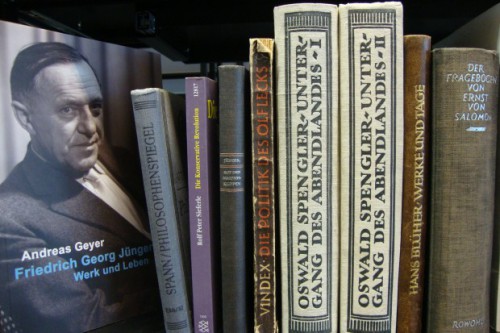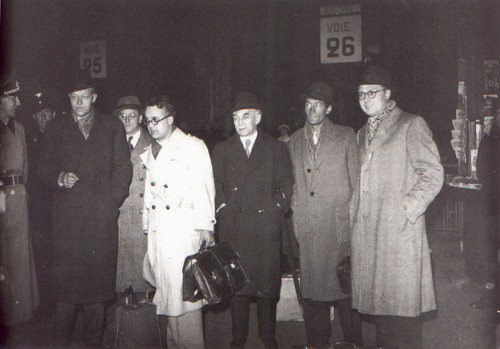
Weimar 1941-1942: la Société Européenne des Ecrivains
par Christophe Dolbeau
Au soir du 4 octobre 1941, trois écrivains français, Jacques Chardonne, Marcel Jouhandeau et Ramon Fernandez, embarquent dans un train de nuit qui va les conduire en Allemagne où les autorités les invitent à participer à un congrès littéraire. Ils seront rejoints ultérieurement par quatre de leurs confrères, Abel Bonnard, Pierre Drieu la Rochelle, Robert Brasillach et André Fraigneau. Favorables au nazisme, pragmatiques, opportunistes ou simplement séduits par le discours européen de leurs interlocuteurs allemands, ces sept hommes apportent ainsi leur caution à une ambitieuse entreprise du Dr Gœbbels : mobiliser les écrivains derrière la bannière du Reich pour construire une Europe nouvelle.
À la découverte du Reich
À un peu plus d’un an de l’armistice franco-allemand et tandis qu’une bonne moitié de la France est occupée, ce voyage est tout sauf anodin. Il démontre qu’une page est en train de se tourner et que certains intellectuels sont prêts à jouer la carte allemande. Ce phénomène n’est pas circonscrit à la France et dès l’escale de Cologne, nos voyageurs retrouvent un petit groupe de collègues arrivés des quatre coins du continent. Il y là une romancière bulgare, Fani Popowa-Mutafowa (1), membre du mouvement fascisant des « Ratniks » (Combattants), un essayiste et poète croate, Antun Bonifačić (2), proche du gouvernement oustachi, le jeune poète et dramaturge finnois Arvi Kivimaa (3), le Danois Svend Fleuron (4), auteur d’ouvrages sur la nature et les animaux sauvages, et son compatriote Ejnar Howalt (5), dramaturge et militant du parti national-socialiste danois, le philosophe fasciste italien Alfredo Acito, les phalangistes espagnols Ernesto Giménez Caballero (6) et Luis Felipe Vivanco (7), le Norvégien Kåre Bjørgen (8), disciple de Quisling, le Suédois Einar Malm (9), le poète frison Rintsje Piter Sybesma (10) et les Flamands Ferdinand Vercnocke (11) et Filip de Pillecijn (12). Pour accueillir et guider cette quinzaine d’invités, les organisateurs de la tournée ont mobilisé toute une escouade de jeunes talents au premier rang desquels se détachent l’historien Karl-Heinz Bremer (13) et le lieutenant Gerhard Heller (14), deux hommes qui jouent à Paris un rôle capital. Autour d’eux sont également du voyage les poètes Moritz Jahn (15), Karl-Heinz Bischoff (16), Friedrich Schnack (17) et Hans Baumann (18), ainsi que le dramaturge August Hinrichs (19) et le romancier et traducteur Carl Rothe (20). Les autorités ne lésinent pas : les visiteurs sont traités de façon royale et entre deux pèlerinages culturels, ils ont droit à toutes sortes d’attentions. On les emmène voir la maison de Stefan George, à Bingen, puis le foyer natal de Gœthe, à Mayence, avant de leur faire déguster quelques bons crus rhénans et de les recevoir en grandes pompes à Heidelberg. À Munich, le groupe est hébergé au Bayerischer Hof, l’un des plus beaux hôtels de la ville, où il rencontre Hanns Johst (21), le tout puissant président de la Chambre des Écrivains du Reich. À Salzbourg, les voyageurs assistent à une représentation des Noces de Figaro et le lendemain, ils sont à Vienne où le bourgmestre leur offre le souper. Ils visitent ensuite Baden, la station thermale qu’affectionnait Beethoven, et font le tour de la demeure de Schubert, avant de prendre part, à la Hofburg, au grand dîner d’apparat qu’offre en leur honneur le coruscant Reichsstatthalter de l’Ostmark, Baldur von Schirach. Le 21 octobre, une dernière étape conduit enfin les visiteurs à Berlin où ils rencontrent Carl Schmitt et visitent Babelsberg, la nouvelle chancellerie et le ministère de la propagande où le Dr Gœbbels leur adresse quelques mots de bienvenue. Leur périple touristique s’achève là car le 23 octobre, ils sont attendus à Weimar où vont débuter les rencontres poétiques (Dichtertreffen) dont ils sont les hôtes d’honneur.
Littérature et Ordre Nouveau
Le 24 octobre 1941, c’est donc dans la grande Weimarhalle et sous un oriflamme frappé d’une Croix de fer, d’un livre et d’un glaive que s’ouvre le congrès qui a pour thème « la littérature dans l’Europe de demain ». Le groupe des invités étrangers s’est étoffé de quelques personnalités et il compte désormais une bonne trentaine de membres. Au nombre des gens qui sont venus directement figurent les Français Abel Bonnard, Pierre Drieu la Rochelle, Robert Brasillach et André Fraigneau que nous avons cités plus haut, les Flamands Felix Timmermans (22) et Ernest Claes (23), les Néerlandais Jan de Vries (24) et Jan Eekhout (25), le Finlandais Veikko Antero Koskenniemi (26), le Suisse John Knittel (27), le Norvégien Lars Hansen (28), l’Italien Arturo Farinelli (29), les Roumains Niculae I. Herescu (30) et Ion Sân-Giorgiu (31) et les Hongrois József Nyirö (32) et Lörinc Szabó (33). Après le discours d’inauguration que prononce Wilhelm Hægert, chef de la section « littérature » au ministère de la Propagande et vice-président de la Chambre des Écrivains, plusieurs orateurs allemands, dont Hanns Johst, Hans Baumann, Bruno Brehm (34) et Mauritz Jahn, se succèdent à la tribune pour évoquer qui le rôle phare de la race germanique dans l’essor et la défense de la culture européenne, qui la croisade contre le communisme ou qui encore la place du poète en temps de guerre et la nécessité de célébrer l’héroïsme sous toutes ses formes.. Au-delà de ces allocutions plus ou moins inspirées, l’événement majeur de ces journées reste toutefois la décision que prennent les participants de pérenniser le climat amical du congrès et de formaliser leur coopération en se regroupant de façon permanente au sein d’une nouvelle association, la Société Européenne des Écrivains (Europäische Schriftsteller-Vereinigung ou ESV). Cette initiative a, semble-t-il, pour origine une suggestion conjointe du Prix nobel norvégien Knut Hamsun, du Flamand Stijn Streuvels (35) et de la romancière finnoise Maila Talvio (36), et le Dr Gœbbels en a, bien sûr, aussitôt saisi tout l’intérêt : placée sous le haut patronage de son ministère, la nouvelle association ne pourra que contribuer au rayonnement culturel du Reich et favoriser la collaboration en Europe. À titre personnel, le ministre y voit aussi une belle revanche sur le PEN club international qui a exclu son pays en 1934, et plus précisément sur son président d’alors, H. G. Wells, un individu qui prétend n’avoir « jamais rencontré un homme plus juste, plus candide et plus honnête » que Joseph Staline…
La Société Européenne des Écrivains (ESV) se choisit un président en la personne du romancier italo-bavarois Hans Carossa (37), deux vice-présidents, M.M. Koskenniemi et Giovanni Papini (38), et un secrétaire général qui sera Carl Rothe. Les statuts de l’association ne seront signés que le 27 mars 1942 (39), au terme du premier exercice. Ils sont assez souples et dénués de connotation politique. L’article deux précise que le but de la société est « l’encouragement des contacts personnels et des rencontres entre écrivains des nations européennes, la discussion et la solution de tâches et de désirs communs dans toutes les branches de la littérature ; la consultation compétente en matière juridique et économique » (40) ; l’article cinq indique que l’association « se divise en groupes nationaux qui sont représentés par leurs porte-parole » ; l’article sept stipule que « l’on n’est membre qu’à titre purement personnel » et que « l’on n’acquiert pas la qualité de membre par une adhésion volontaire mais uniquement par une nomination », cette dernière étant faite par le président de la société, sur proposition du porte-parole du groupement national (article 8). Le siège social est établi à Weimar (article 3) et la cotisation fixée à dix Reichsmarks (article 12). Entre deux flâneries dans Weimar, une visite de la maison de Gœthe et un dîner au château de Tiefurt, les congressistes participent à différents ateliers. Parmi divers projets, ils envisagent de créer une grande bibliothèque ouverte aux membres de la société et se promettent d’encourager activement la diffusion dans toute l’Europe des meilleures œuvres des auteurs contemporains. Dans l’immédiat, ils se fixent néanmoins pour premier objectif de lancer une publication de prestige qui servira de vitrine à l’association. Les protecteurs allemands de l’ESV ayant donné leur accord et promis quelques crédits, le premier numéro du mensuel Europäische Literatur verra le jour en mai 1942. Dirigé par Wilhelm Ruoff, il s’agit d’un magazine très éclectique et non dépourvu d’attraits qui traite aussi bien de la poésie japonaise que de la littérature espagnole contemporaine, de la poésie lyrique croate ou du point de vue danois sur les lettres américaines, qui aborde de grands thèmes comme le Danube, le Rhin ou Dante en Allemagne, et consacre de nombreux reportages aux auteurs de l’ESV (41).
Les premières rencontres européennes s’achèvent le dimanche 26 octobre pour faire place à la Semaine du livre de guerre allemand qu’inaugure Joseph Gœbbels. Dans son allocution d’ouverture, le ministre ne manque pas de saluer les invités étrangers. Ceux-ci étaient présents, le matin même, lorsque le Reichsminister est allé fleurir les tombes jumelles de Gœthe et de Schiller, et dans la soirée, ils prennent part à un dîner d’adieu suivi d’une représentation de l’Iphigénie en Tauride de Gœthe. Le lendemain, les congressistes regagnent leurs pays respectifs, à l’exception de Bonnard, Drieu la Rochelle, Brasillach et Fraigneau qui font un crochet à Jäckelsbruch où Arno Breker les reçoit dans son atelier, puis à Berlin où ils s’entretiennent avec quelques travailleurs français. À leur retour, tous les invités de Weimar vanteront la parfaite courtoisie de leurs hôtes, l’organisation impeccable de leur séjour et l’ambiance particulièrement conviviale du congrès ; tous souligneront également les belles perspectives de réconciliation et de renaissance européenne qu’ouvrent de telles rencontres.
Un indéniable succès
Dès la fin de l’année 1941, la toute nouvelle Société Européenne des Écrivains commence à s’organiser et ses « groupes nationaux » à recruter. Un certain mystère demeure, aujourd’hui encore, sur la composition du groupe français dont on ne connaît avec certitude que ceux de ses membres qui se sont rendus à Weimar. On peut toutefois supputer que des gens comme Alphonse de Châteaubriant, Ernest Fornairon, Edouard Dujardin ou Camille Mauclair ont pu y appartenir mais ce ne sont que des suppositions. Apparaît aussi à Paris, en février 1943, un hebdomadaire baptisé Panorama dont les objectifs sont fort proches de ceux de Europäische Literatur (42) et dont les collaborateurs sont souvent les mêmes. Moins de cachotteries, en revanche, pour la Finlande où l’on sait précisément qu’une cinquantaine d’écrivains, dont Mika Waltari (43) et Viljo Kajava (44), figurent dans le groupe local de l’ESV. En Norvège, Knut Hamsun a rejoint l’association et en Suède, Sven Hedin (45) a fait de même. En Croatie et outre Antun Bonifačić que nous avons déjà mentionné, l’association compte 17 membres dont Mile Budak (46), Slavko Kolar (47), Mihovil Kombol (48), Milan Begović (49), Dobriša Cesarić (50), Zvonko Milković (51) et Ivan Goran Kovačić (52). En Espagne, où le recrutement de l’ESV n’est pas bien connu, il est probable que fassent partie de l’association quelques-uns des poètes (53) qui signent, en 1941, le recueil Poemas de la Alemania eterna, mais il s’agit là encore d’une hypothèse. La Belgique, de son côté, est un pays où l’ESV – qui dispose de deux groupes – rencontre un franc succès. Chez les Flamands, la plupart des auteurs nationalistes et « völkisch » – Stijn Streuvels, Felix Timmermans, Filip de Pillecijn, Ferdinand Vercnocke, Emiel Buysse (54), Ernest Claes, Cyriel Verschaeve (55), Gerard Walschap (56), Wies Moens (57) et Antoon Thiry (58) – en font partie (59), et quant à la « section wallonne et belge de langue française », elle rassemble, entre autres, les romanciers prolétariens Pierre Hubermont (60) et Constant Malva (61) (photo ci-dessous), l’académicienne Marie Gevers (62), le journaliste Pierre Daye (63), le traducteur Guillaume Samsoen de Gérard (64), le régionaliste Joseph Mignolet (65), le rexiste Lucien Jablou (alias Franz Briel) et même le très curieux Sulev Jacques Kaja (66).
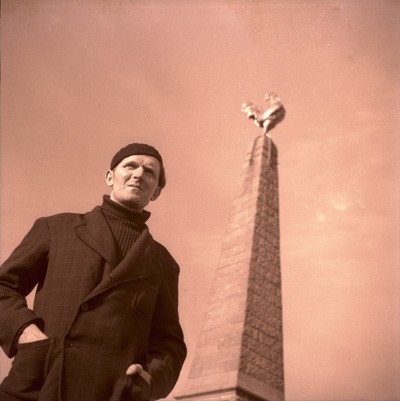
Conformément aux statuts de l’association comme aux vœux de ses membres, la Société Européenne des Écrivains se réunit une seconde fois à l’automne 1942, entre le 7 et le 11 octobre. Cette fois, il n’y a pas eu de balade touristique et les conditions de guerre se font sentir : l’hébergement est bien moins luxueux et les menus frugaux. Dans un rapport à son ministre de tutelle, l’un des participants italiens se plaindra notamment de l’omniprésence de la soupe de pommes de terre et de la margarine… Quoi qu’il en soit, de nombreux auteurs étrangers ont cependant fait le déplacement. La Finlandaise Maila Talvio est présente, tout comme ses compatriotes Veikko Antero Koskenniemi, Mika Waltari, Viljo Kajava, Örnulf Tigerstedt (67) et Tito Colliander (68). On dénombre également cinq Français, M. M. Jacques Chardonne, Pierre Drieu la Rochelle, André Fraigneau, André Thérive et Georges Blond (69), le Roumain Liviu Rebreanu (70), le poète hollandais Henri Bruning (71), le dramaturge danois Svend Borberg (72) et le romancier slovaque Jozef Cíger-Hronský (73). Contrairement au premier congrès, la délégation italienne est cette fois plutôt fournie avec les académiciens Arturo Farinelli, Antonio Baldini (74) et Emilio Cecchi (75), le philosophe et musicologue Giulio Cogni (76), les universitaires fascistes Mario Sertoli et Alfredo Acito, le critique Enrico Falqui (77) et les deux valeurs montantes que sont Elio Vittorini (78) et Giaime Pintor (79).
Ce second congrès a pour thème « le poète et le guerrier » et en l’absence de Hans Carossa comme de Papini, c’est le Finnois Koskenniemi qui préside. Comme l’année précédente, la plupart des orateurs sont des écrivains allemands – Edwin Erich Dwinger (80), Wilhelm Ehmer (81), Wilhelm Schäfer (82), Gerhard Schumann, Georg von der Vring (83) et Hermann Burte (84) – mais deux Italiens, Arturo Farinelli et Emilio Cecchi, sont également invités à s’adresser à l’assemblée. Si les communications et les débats restent très académiques, l’association prend toutefois, sur le plan pratique, une décision importante, celle d’attribuer, pour la première fois, une bourse d’encouragement à deux jeunes auteurs : la Finlandaise Irja Salla (85) et le Croate Dobriša Cesarić. La guerre et ses enjeux sont bien évidemment au cœur de toutes les conversations des congressistes auxquels Joseph Goebbels ne manque pas de rappeler, dans son discours de clôture, que le conflit en cours n’est pas seulement un combat entre des forces matérielles mais aussi un affrontement entre des forces spirituelles et que les écrivains n’ont d’autre choix que de s’engager. Le 11 octobre, les écrivains se séparent et pour la plupart, ils ne se reverront pas : du fait de la tournure négative du conflit et de l’intensification des bombardements aériens sur l’Allemagne, il n’y aura, en effet, pas d’autre réunion plénière de l’ESV jusqu’à la dissolution officielle de l’association, en 1948. En 1943, néanmoins, plusieurs membres de l’ESV – Robert Brasillach, Ernesto Giménez Caballero, Pierre Daye, Filip de Pillecijn, Ferdinand Vercnocke, Örnulf Tigerstedt – se rendront à Katyn pour témoigner de l’ampleur du massacre commis par les Soviétiques : ce sera sans doute la dernière manifestation officielle de l’association.
Une initiative novatrice
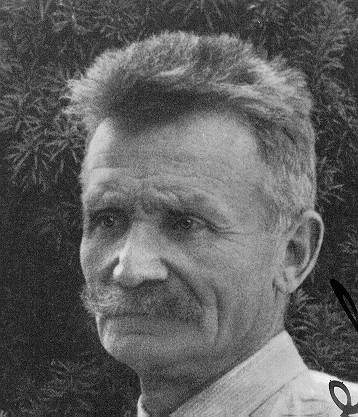 À l’issue de cette brève évocation de la Société Européenne des Écrivains, force est de constater que le IIIe Reich et l’Europe occupée n’étaient pas le désert culturel absolu que l’on nous a si souvent décrit. Dans cet enfer, il y avait des musiciens, des peintres et des sculpteurs qui s’exprimaient (86) et aussi des écrivains qui ne se sentaient pas si mal. Et quant au Dr Gœbbels, loin de brandir son Browning à l’énoncé du mot culture (87), il témoignait, au contraire, d’un réel intérêt pour les Lettres et les Arts, domaines où il faisait souvent montre (toutes proportions gardées, bien sûr) d’un « libéralisme » étonnant. La Société Européenne des Écrivains en est un peu l’illustration puisque le ministre de la Propagande en avait, en toute connaissance de cause, confié les leviers de commande à des hommes qui n’avaient rien de grands partisans du régime nazi. Hans Carossa et Carl Rothe n’étaient pas membres du NSDAP : le premier se réclamait presque ouvertement de l’ « émigration intérieure » et quant au second, il était même carrément en relation avec des conspirateurs antinazis. Parmi les membres allemands de l’association, nombreux étaient les auteurs qui, à l’instar de Hans Friedrich Blunck (88), Karl Heinrich Waggerl (89), Wilhelm Schäfer ou Eugen Roth (90), n’avaient pas la carte du parti, et si l’on trouvait, bien sûr, chez les adhérents étrangers, un fort contingent de sympathisants déclarés du national-socialisme, on y rencontrait aussi des conservateurs, des européistes et de simples anticommunistes. Lorsque, en mars 1942 et à l’occasion d’une réunion de l’ESV, Giovanni Papini fit un vibrant éloge du christianisme, on ne peut pas dire qu’il était vraiment en adéquation avec la doctrine nazie. Quelques auteurs provenaient d’horizons peu orthodoxes, comme l’académicien Emilio Cecchi qui avait signé, en 1925, le Manifeste des intellectuels antifascistes de Benedeto Croce, ou Viljo Kajava qui était un ancien marxiste. Certains, enfin, n’avaient pas véritablement choisi leur camp : ils étaient peut-être là par opportunisme ou par simple curiosité. Ainsi, les Croates Dobriša Cesarić, Slavko Kolar et Ivan Goran Kovačić ne tarderont-ils pas à se rallier à Tito, et les Italiens Vittorini et Pintor à rejoindre eux aussi les partisans communistes ou les forces alliées…
À l’issue de cette brève évocation de la Société Européenne des Écrivains, force est de constater que le IIIe Reich et l’Europe occupée n’étaient pas le désert culturel absolu que l’on nous a si souvent décrit. Dans cet enfer, il y avait des musiciens, des peintres et des sculpteurs qui s’exprimaient (86) et aussi des écrivains qui ne se sentaient pas si mal. Et quant au Dr Gœbbels, loin de brandir son Browning à l’énoncé du mot culture (87), il témoignait, au contraire, d’un réel intérêt pour les Lettres et les Arts, domaines où il faisait souvent montre (toutes proportions gardées, bien sûr) d’un « libéralisme » étonnant. La Société Européenne des Écrivains en est un peu l’illustration puisque le ministre de la Propagande en avait, en toute connaissance de cause, confié les leviers de commande à des hommes qui n’avaient rien de grands partisans du régime nazi. Hans Carossa et Carl Rothe n’étaient pas membres du NSDAP : le premier se réclamait presque ouvertement de l’ « émigration intérieure » et quant au second, il était même carrément en relation avec des conspirateurs antinazis. Parmi les membres allemands de l’association, nombreux étaient les auteurs qui, à l’instar de Hans Friedrich Blunck (88), Karl Heinrich Waggerl (89), Wilhelm Schäfer ou Eugen Roth (90), n’avaient pas la carte du parti, et si l’on trouvait, bien sûr, chez les adhérents étrangers, un fort contingent de sympathisants déclarés du national-socialisme, on y rencontrait aussi des conservateurs, des européistes et de simples anticommunistes. Lorsque, en mars 1942 et à l’occasion d’une réunion de l’ESV, Giovanni Papini fit un vibrant éloge du christianisme, on ne peut pas dire qu’il était vraiment en adéquation avec la doctrine nazie. Quelques auteurs provenaient d’horizons peu orthodoxes, comme l’académicien Emilio Cecchi qui avait signé, en 1925, le Manifeste des intellectuels antifascistes de Benedeto Croce, ou Viljo Kajava qui était un ancien marxiste. Certains, enfin, n’avaient pas véritablement choisi leur camp : ils étaient peut-être là par opportunisme ou par simple curiosité. Ainsi, les Croates Dobriša Cesarić, Slavko Kolar et Ivan Goran Kovačić ne tarderont-ils pas à se rallier à Tito, et les Italiens Vittorini et Pintor à rejoindre eux aussi les partisans communistes ou les forces alliées…
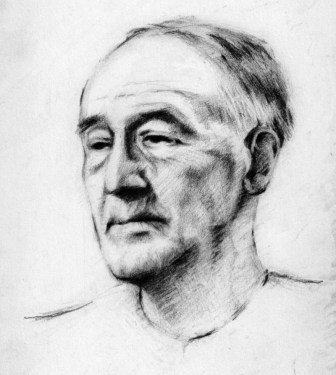 « Nul n’aura de l’esprit, hors nous et nos amis », écrivait déjà Molière auquel Jean-Paul Sartre fait écho à sa manière en affirmant que « par définition, un fasciste ne peut pas avoir de talent » (91). N’en déplaise à « l’agité du bocal » (comme le surnommait Céline), la Société Européenne des Écrivains comptait tout de même dans ses rangs des personnalités comme Knut Hamsun, Sven Hedin, Karl Heinrich Waggerl ou John Knittel qui étaient des auteurs de notoriété internationale et au talent unanimement reconnu. Elle réunissait aussi des gens comme Eugen Roth, Marcel Jouhandeau (photo), Mile Budak, Stijn Streuvels, V. A. Koskenniemi ou József Nyírö qui figuraient à l’époque et dans leurs pays respectifs parmi les auteurs les plus lus. Certes, à côté de ces « célébrités », l’ESV accueillait quelques écrivains moins connus mais ce déficit de notoriété ne tenait pas tant à leur manque de talent qu’au fait que l’ancien système les avait délibérément ignorés ou marginalisés pour des raisons idéologiques…
« Nul n’aura de l’esprit, hors nous et nos amis », écrivait déjà Molière auquel Jean-Paul Sartre fait écho à sa manière en affirmant que « par définition, un fasciste ne peut pas avoir de talent » (91). N’en déplaise à « l’agité du bocal » (comme le surnommait Céline), la Société Européenne des Écrivains comptait tout de même dans ses rangs des personnalités comme Knut Hamsun, Sven Hedin, Karl Heinrich Waggerl ou John Knittel qui étaient des auteurs de notoriété internationale et au talent unanimement reconnu. Elle réunissait aussi des gens comme Eugen Roth, Marcel Jouhandeau (photo), Mile Budak, Stijn Streuvels, V. A. Koskenniemi ou József Nyírö qui figuraient à l’époque et dans leurs pays respectifs parmi les auteurs les plus lus. Certes, à côté de ces « célébrités », l’ESV accueillait quelques écrivains moins connus mais ce déficit de notoriété ne tenait pas tant à leur manque de talent qu’au fait que l’ancien système les avait délibérément ignorés ou marginalisés pour des raisons idéologiques…
Au total et même si l’expérience a rapidement tourné court, il semble juste de dire que cette Société Européenne des Écrivains fut une initiative plutôt heureuse et novatrice. Il serait sans aucun doute naïf de ne pas voir la part d’hypocrisie et d’instrumentalisation politique qu’elle recelait, mais au-delà de cette indispensable réserve, force est de reconnaître que cette association s’inscrivait bel et bien dans le cadre d’un vrai projet européen. Elle traduisait indubitablement le désir sincère de nombreux écrivains de se concerter et d’avancer ensemble sur des chemins nouveaux, loin des coteries communisantes et cosmopolites qui régnaient avant-guerre sur la littérature et l’édition. Elle traduisait peut-être aussi, mais avec plus ou moins de sincérité, le souhait ou l’arrière-pensée de certains dirigeants allemands de bâtir autour de leur pays une véritable confédération européenne (92).
Christophe Dolbeau
Notes
(1) Fani Popowa-Mutafowa (1902-1977) est l’auteur de nombreux romans historiques (Le dernier des Assénides ; Ivan Assen II ; La fille du tsar Kaloyan) ; elle sera emprisonnée par les communistes en 1945.
(2) Antun Bonifačić (1901-1986) est l’auteur de recueils de poésie (Pjesme ; Sabrane pjesme), de romans (Krv Majke Zemlje ; Mladice ; Bit ćete kao Bogovi) et d’essais (Paul Valéry ; Ljudi Zapada). Réfugié au Brésil puis aux USA, il présidera le Mouvement de Libération Croate (HOP) entre 1975 et 1981.
(3) Arvi Kivimaa (1904-1984) a été le directeur du Théâtre de Tampere (1940-42) et du Théâtre National de Finlande (1950-1974). Auteur de romans (Epäjumala ; Viheriövä risti), il a également écrit des nouvelles, des essais et des pièces de théâtre.
(4) Svend Fleuron (1874-1966) est l’auteur de nombreux romans consacrés à la nature et aux animaux (Le roman d’un brochet ; Les cygnes du lac de Wild).
(5) Ejnar Howalt (1891-1953) est un auteur de comédies (Asfalten synger ; Hvis jeg havde Penge) ; il appartenait au parti national-socialiste danois (DNSAP).
(6) Ernesto Giménez Caballero (1899-1988) est l’auteur de divers ouvrages inspirés par le surréalisme, l’ultraïsme et le futurisme (Yo, inspector de alcantarillas ; Julepe de menta) ainsi que d’essais politiques (Genio de España ; La nueva catolicidad). Il fut l’un des premiers phalangistes. Après la guerre, il servira dans la diplomatie et occupera notamment le poste d’ambassadeur au Paraguay. Voir C. Dolbeau, « Ernesto Giménez Caballero, un phalangiste hors norme », in Les Parias, Lyon, Irminsul, 2001, pp. 229-239.
(7) Architecte de profession et neveu de José Bergamín, Luis Felipe Vivanco (1907-1975) a publié de nombreux recueils de poésie (Cantos de primavera ; Tiempo de dolor ; Continuación de la vida). D’abord de sympathie républicaine, il s’est rallié aux idées phalangistes en 1936.
(8) Kåre Bjørgen (1897-1974) est le poète officiel du Nasjonal Samling de Vidkun Quisling ; il est l’auteur de plusieurs recueils « engagés » (I Noregs namn ; Eld og blod ; Storm og stille) et d’une pièce dramatique (Angvare).
(9) Einar Malm (1900-1988) est un romancier, poète et scénariste (auteur notamment de l’adaptation cinématographique du roman d’August Strindberg Hemsöborna). Après guerre, il a consacré plusieurs ouvrages aux Indiens d’Amérique du Nord.
(10) Originaire de la Frise, Rintsje Piter Sybesma (1894-1975) est l’auteur de récits en prose (Om it hiem ; It anker) et de poésie (Ta de moam ; Der Zehnte Mai ; De swetten útlein). Il était membre du Nationaal-Socialistische Beweging de Anton Mussert.
(11) Avocat de profession et d’origine ostendaise, Ferdinand Vercnocke (1906-1989) est l’auteur de poèmes (Zeeland ; Heervaart ; Ask en Embla) et de récits en prose (Liebaerts, sagen voor de Dietsche jeugd ; Onze adelbrieven) ; il a également été le scénariste du film de propagande Vlaanderen te weer (1944). Il était sympathisant du Vlaams Nationaal Verbond (VNV).
(12) Filip de Pillecijn (1891-1962) est l’un des fondateurs du pèlerinage de l’Yser. Il est l’auteur de romans (Blauwbaard ; Hans van Malmédy ; De soldaat Johan), de nouvelles (Monsieur Hawarden ; Schaduwen) et d’essais biographiques (Stijn Streuvels en zijn werk ; Renaat De Rudder). Sympathisant des mouvements nationalistes VNV et DeVlag, il sera condamné à 10 ans de prison en 1947 mais sortira de détention en 1949.
(13) Historien de formation, Karl-Heinz Bremer (1911-1942), a été lecteur d’allemand à la Sorbonne et à l’École Normale Supérieure ; il fut aussi le traducteur des œuvres de Montherlant. Après avoir été l’un des dirigeants de l’Institut Allemand de Paris, il est envoyé sur le front de l’Est et tombe au combat à Veliky Novgorod, près du Lac Ilmen.
(14) Après des études de lettres à Berlin, Pise et Toulouse, Gerhard Heller (1909-1982) a travaillé à la Radio Berlin. Affecté à la Propaganda Staffel de Paris durant l’Occupation, il y supervise les services de la censure, ce qui le met en contact avec de nombreux éditeurs et écrivains.
(15) Moritz Jahn (1884-1979) est un professeur spécialisé dans l’étude du bas allemand. Il est l’auteur de plusieurs ouvrages sur cette thématique (Ulenspegel un Jan Dood ; Boleke Roleffs) ainsi que de nombreux essais (Das Denkmal des Junggesellen ; Die Gleichen).
(16) Libraire de profession, Karl-Heinz Bischoff (1900-1978) est l’auteur de nombreux récits et essais (Bis zur Heimkehr im Sommer ; Die Muschel ; Das grössere Glück). Membre du NSDAP, il fut également fonctionnaire auprès de la Chambre des Écrivains.
(17) Friedrich Schnack (1888-1977) a étudié la botanique, la géologie et l’entomologie avant de faire carrière dans le journalisme et la littérature. Il est l’auteur de poèmes (Vogel Zeitvorbei ; Palisander), de romans (Die goldenen Äpfel ; Die Orgel des Himmels), d’ouvrages sur la nature (Cornelia und die Heilkräuter ; Sybille und die Feldblumen) et de livres de voyage (Der Maler von Malaya ; Der Zauberer von Sansibar ; Der Mann aus Alaska).
(18) Instituteur, Hans Baumann (1914-1988) est un poète et l’un des plus célèbres compositeurs de chansons (Es zittern die morschen Knochen ; Hohe Nacht der klaren Sterne) de la Jeunesse Hitlérienne. Après la guerre (où il a servi dans une compagnie de propagande), il écrit des livres pour enfants qui rencontrent un grand succès.
(19) Spécialiste du bas allemand, August Hinrichs (1879-1956) est l’auteur de très nombreux récits et comédies (Der Moorhof ; Das Licht der Heimat ; Das Volk am Meer ; Der Musterbauer, etc) ainsi que de pièces radiophoniques.
(20) Carl Rothe (1900-1970) est l’auteur de romans (Die Zinnsoldaten ; Olivia) et d’essais (Weltkrieg gegen Deutsche Wirtschaft ; Karl IV von Luxemburg, deutscher Kaiser und König von Böhmen). Membre de l’Association pour le germanisme à l’étranger (VDA), il n’adhère pas, en revanche, au NSDAP et entretient des liens d’amitié avec plusieurs adversaires du régime (notamment Adolf Reichwein et Caesar von Hofacker, l’un des conjurés du 20 juillet 1944). Il sera, après guerre, le traducteur de Pierre Gaxotte.
(21) Président de la Chambre des Écrivains et de l’Académie de Poésie, Hanns Johst (1890-1978) est l’auteur de nouvelles (Der Anfang ; Die Begegnung ; Mask und Gesicht), de poèmes (Rolandruf ; Die Strasse), d’essais (Meine Erde heisst Deutschland) et de pièces de théâtre (Strof ; Propheten ; Wechsler und Händler ; Der Herr Monsieur ; Thomas Paine). Il est surtout connu pour sa pièce Schlageter où figure la fameuse phrase « Quand j’entends parler de culture, j’arme mon Browning ». Après guerre, il sera interné par les Alliés durant trois ans et demi.
(22) Autodidacte, Felix Timmermans (1886-1947) est l’auteur de romans (Pallieter ; Het kindeke Jezus in Vlaanderen ; Pieter Bruegel ; De familie Hernat), de poésie (Door de dagen ; Adagio) et de pièces de théâtre ; c’était également un peintre de talent. Ses ouvrages sont parmi les plus appréciés du public flamand.
(23) Ernest Claes (1885-1968) est l’auteur de très nombreux romans (De Witte ; Het leven van Herman Coene ; Kobeke ; De moeder en de drie soldaten ; etc). Brièvement interné à la fin de la guerre en raison de son appartenance au VNV, il sera finalement acquitté.
(24) Professeur à l’université de Leyde, Jan de Vries (1890-1964) est un linguiste et un mythographe de réputation internationale. Auteur de nombreux ouvrages qui font autorité (De Germaansche Oudheid ; Altgermanische Religiongeschichte ; Kelten und Germanen ; Het Nibelungenlied ; etc), il sera inquiété à la Libération bien qu’il se fût toujours montré très indépendant à l’égard des nazis.
(25) Jan Eekhout (1900-1978) est l’auteur de poésie (Louteringen ; In aedibus amoris ; De zanger van den Nacht) et de romans (Leven en daden van Pastoor Poncke van Damme in Vlaanderen ; De historie van Kathelijne Claes van Sluys in Vlaanderen ; etc). Proche du NSB de A. Mussert, il sera condamné à deux ans d’emprisonnement à la Libération.
(26) Professeur de littérature à l’Université de Turku et président de l’Association des Écrivains Finnois (1941-46), Veikko Antero Koskenniemi (1885-1962) est l’auteur de récits épiques (Nuori Anssi), de poèmes (Runoja ; Valkeat kaupungit ; Hiilivalkea) et d’essais (Kirjoja ja kirjailijoita). C’était l’un des auteurs les plus populaires de Finlande.
(27) John Knittel (1891-1970) est l’auteur de pièces de théâtre et de romans (Capitaine West ; Thérèse Étienne ; Le Basalte bleu ; Le Commandant ; Via Mala ; Le Docteur Ibrahim ; Amédée ; etc). En raison de ses sympathies pour le IIIe Reich, il sera exclu de l’Association des Écrivains Suisses…
(28) Originaire du nord de la Norvège, Lars Hansen (1869-1944) est l’auteur de romans (I Spitsbergens vold ; Jens Sørskar ; En havets søn ; Hvalrossen av Tromsø ; Beitsaren ; Kongen på Råsa ; Odin klarte det) qui seront pour la plupart traduits en allemand. Il était membre du Nasjonal Samling de V. Quisling.
(29) Linguiste de réputation internationale, Arturo Farinelli (1867-1948) fut professeur aux universités d’Innsbruck et Turin et membre de l’Académie d’Italie (1929). Il est l’auteur de nombreux essais (Die Beziehungen zwischen Spanien und Deutschland in der Literatur ; Dante, Pétrarque et Boccace en Espagne ; Le romantisme dans le monde latin ; Lope de Vega en Allemagne ; etc).
(30) Latiniste de réputation internationale, Niculae I. Herescu (1903-1961) fut professeur d’université, fondateur et directeur de l’Institut Roumain d’Études Latines, président de la Fondation Culturelle Carol Ier et de l’Association des Écrivains Roumains. Il est l’auteur de nombreux essais (La poésie latine : étude des structures phoniques ; Bibliographie de la littérature latine ; Ovidiana ; Points de vue sur la langue de Tite Live ; etc). À partir de 1944, il vit en exil, d’abord au Portugal puis en France
(31) Ion Sân-Giorgiu (1893-1950) est un poète (moderniste), un essayiste, un critique littéraire et un dramaturge, auteur de plusieurs pièces à succès (Masca ; Banchetul ; Femeia cu douā suflete). Membre successivement du Parti National Chrétien et du Front de la Renaissance Nationale, il sympathise ensuite avec la Garde de Fer. Émigré en 1944 et condamné à mort par contumace, il siègera au sein du gouvernement légionnaire en exil qu’avait fondé Horia Sima.
(32) Originaire de Transylvanie, József Nyírö (1889-1953) est l’auteur de romans et de nouvelles (Uz Bence ; Isten igájában ; Halhatatlan élet ; Nésna Küzdelem ; etc) très appréciés du public hongrois. Membre du mouvement des Croix Fléchées, il trouvera refuge en Allemagne puis en Espagne à la fin de la guerre.
(33) Lörinc Szabó (1900-1957) est l’auteur de plusieurs recueils de poésie (Föld, erdö, Isten ; Kalibán ; Te meg a világ ; Régen és most ; etc) qui lui ont valu de nombreuses distinctions. Il est également le traducteur de Shakespeare, Baudelaire, Villon, Verlaine, Gœthe, Kleist et Rilke. Il sera complètement exclu de la vie publique hongroise au lendemain de la guerre.
(34) D’origine autrichienne, Bruno Brehm (1892-1974) est l’auteur de plus de quarante romans et récits (Der lachende Gott ; Apis und este ; Das war das Ende ; Weder Kaiser noch König ; Tag der Erfüllung ; etc). Officier durant la Première Guerre mondiale, il sert à nouveau comme officier d’ordonnance (en Grèce, en Russie et en Afrique du Nord) durant la Seconde Guerre mondiale.
(35) Ancien boulanger, Stijn Streuvels (1871-1969) est un écrivain extrêmement prolixe et très populaire auprès du public flamand. La plupart de ses récits et romans (Zomerland ; De oogst ; Openlucht ; Reinaert de Vos ; De werkman ; etc) décrivent la vie des paysans et des gens modestes en Flandre Occidentale. À deux reprises, S. Streuvels a manqué de très peu le prix Nobel de littérature.
(36) Très célèbre en Finlande, Maila Talvio (1871-1951) est l’auteur de très nombreux romans et nouvelles (Haapaniemen keinu ; Aili ; Juha Joutsia ; Kirjava keto ; Itämeren tytar ; Pimeänpirtin hävitys ; Silmä yössä ; Karjet, etc). Elle a par ailleurs traduit et adapté en finnois les œuvres de Mæterlinck et Andersen. Animatrice d’un salon littéraire réputé, elle est également connue pour avoir ardemment défendu la cause des Polonais et des Baltes.
(37) Médecin de profession, Hans Carossa (1878-1956) est l’auteur de poésie (Gesammelte Gedichte), de nouvelles et de romans, souvent autobiographiques (Eine Kindheit ; Verwandlungen einer Jugend ; Der Artz Gion ; Rumänisches Tagebuchs ; Geheimnisse des reifen Lebens ; Das Jahr der schönen Täuschungen).
(38) Ancien instituteur, Giovanni Papini (1881-1956) est l’auteur de recueils de poésie, d’essais (Storia della letteratura italiana ; Il crepuscolo dei filosofi ; Storia di Cristo), de nouvelles (Il pilota cieco) et de romans (Un uomo finito ; Gog ; etc). Il était également membre du tiers ordre franciscain et académicien.
(39) Les signataires allemands sont H. F. Blunck, H. Baumann, H. Carossa, Moritz Jahn, Herybert Menzel et Gerhard Schumann ; les signataires étrangers sont S. Kolar (Croatie), Jan de Vries (Pays-Bas), Svend Borberg (Danemark), F. de Pillecijn (Belgique), F. Popowa-Mutafowa (Bulgarie), Arvi Kivimaa et Örnulf Tigerstedt (Finlande), J. Chardonne (France), G. Papini (Italie), J. C. Hronsky (Slovaquie), E. Giménez Caballero (Espagne), L. Rebreanu (Roumanie) et J. Knittel (Suisse).
(40) Voir la traduction française des statuts citée par B. Delcord in « À propos de quelques “chapelles“ politico-littéraires en Belgique (1919-1945 », Cahiers d’Histoire de la IIe Guerre mondiale, Bruxelles, Centre de Recherches et d’Études historiques de la IIe Guerre mondiale, N° 10, octobre 1986, p. 205.
(41) Voir Oliver Lubrich, « Comparative Literature – in, from and beyond Germany », in Comparative Critical Studies, 3.1-2 (2006), 47-67.
(42) Sur Panorama, voir Lionel Richard, Le nazisme et la culture, Paris, Maspero, 1978, pp. 290-292.
(43) Mika Waltari (1908-1979) est l’auteur de romans (Suuri illusioni ; Kiinalainen kissa ; Vieras mies tuli taloon ; Fine Van Brooklyn ; Kaarina Maununtytar ; Sinuhe egyptiläinen ; Johannes Angelos ; etc) mais également de contes pour enfants et de pièces de théâtre. De nombreux textes de N. Waltari ont été traduits et adaptés au cinéma.
(44) Viljo Kajava (1909-1998) est l’auteur de quelques romans, de pièces radiophoniques et surtout de nombreux recueils de poésie (Rakentajat ; Murrosvuodet ; Tampereen runot ; etc). Il a fait ses débuts à l’extrême gauche de l’échiquier politique.
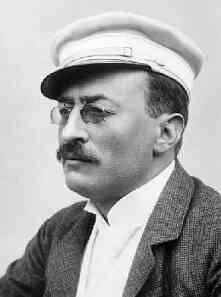 (45) Sven Hedin (1865-1952) est un célèbre géographe et explorateur. Il est l’auteur de récits de voyage (Le Tibet dévoilé ; Bagdad – Babylon – Ninive ; Persien und Mesopotamien ; Von Peking nach Moskau ; Rätsel der Gobi ; Der wandernde See ; etc), d’ouvrages autobiographiques (Mein Leben als Entdecker ; Eroberungszüge in Tibet ; Ohne Auftrag in Berlin) et d’ouvrages politiques (Ein Volk in Waffen ; Deutschland und der Weltfriede ; Amerika im Kampf der Kontinente). Sympathisant du IIIe Reich (bien qu’il eût des ascendants juifs), il interviendra à plusieurs reprises en faveur de prisonniers juifs et norvégiens et sauvera la vie de plusieurs d’entre eux. En 1946, il obtiendra également la grâce du général allemand Nikolaus von Falkenhorst qui avait été condamné à mort par un tribunal britannique.
(45) Sven Hedin (1865-1952) est un célèbre géographe et explorateur. Il est l’auteur de récits de voyage (Le Tibet dévoilé ; Bagdad – Babylon – Ninive ; Persien und Mesopotamien ; Von Peking nach Moskau ; Rätsel der Gobi ; Der wandernde See ; etc), d’ouvrages autobiographiques (Mein Leben als Entdecker ; Eroberungszüge in Tibet ; Ohne Auftrag in Berlin) et d’ouvrages politiques (Ein Volk in Waffen ; Deutschland und der Weltfriede ; Amerika im Kampf der Kontinente). Sympathisant du IIIe Reich (bien qu’il eût des ascendants juifs), il interviendra à plusieurs reprises en faveur de prisonniers juifs et norvégiens et sauvera la vie de plusieurs d’entre eux. En 1946, il obtiendra également la grâce du général allemand Nikolaus von Falkenhorst qui avait été condamné à mort par un tribunal britannique.
(46) Avocat de profession, Mile Budak (1889-1945) est l’auteur de récits autobiographiques (Ratno robije ; Na vulkanima) et de romans consacrés à la vie des paysans croates (Ognjište ; Direktor Križanić ; Na Veliki Petak ; San o sreći ; Kresojića soj). Membre de l’Oustacha, ministre et ambassadeur de l’État Indépendant Croate, il sera condamné à mort et exécuté par les partisans de Tito. Voir C. Dolbeau, « Mile Budak, itinéraire d’un réprouvé » sur http://euro-synergies.hautetfort.com/archive/2013/11/08/temp-bd4084d8309dec37480915bf93bde6df-5216585.html
(47) Slavko Kolar (1891-1963) est l’auteur de scénarios, de livres pour enfants, de pièces de théâtre (Politička večera ; Sedmorica u podrumu), de textes autobiographiques et de nouvelles ou romans (Povratak ; Svoga tela gospodar ; Čizme ; Jesu li kravama potrebni repovi ; etc). Il sera président de l’Association des Écrivains Croates.
(48) Mihovil Kombol (1883-1955) est l’auteur d’études et d’essais consacrés à l’histoire de la littérature (Dinko Ranjina i talijanski petrarkisti ; Povijest hrvatske književnosti do narodnog preporoda ; Zadar kao književno središte).
(49) Milan Begović (1876-1948) est l’auteur de quelques romans et nouvelles mais il est surtout connu pour ses pièces de théâtre (Pustolov pred vratima ; Amerikanska jahta u splitskoj luci ; Gospođa Walewska ; Bez trećega) et son anthologie de la prose moderne (Hrvatska proza XX. stoljeća). Il sera exclu en 1945 de l’Association des Écrivains Croates.
(50) Dobriša Cesarić (1902-1980) est un traducteur, un compositeur de chansons (Knjiga prepjeva) et l’auteur d’une dizaine de recueils de poésie (Lirika ; Pjesme ; Izabrani stihovi ; Slap, izabrane pjesme ; etc). Après guerre, il sera président de l’Association des Écrivains Croates et membre de l’Académie Yougoslave.
(51) Avocat de profession, Zvonko Milković (1888-1978) est l’auteur d’une anthologie de la poésie croate (Hrvatska mlada lirika) et de plusieurs recueils de poésie (Pobožni časovi ; Pjesme ; Krenimo u rano jutro).
(52) Ivan Goran Kovačić (1913-1943) est l’auteur de poèmes (Lirika 1932 ; Dani gnjeva). Rallié aux partisans communistes durant l’hiver 1942, il sera tué par des Tchetniks serbes. Plusieurs de ses œuvres seront publiées après la guerre (Hrvatske pjesme partizanke ; Ognji i rože ; etc).
(53) À savoir Emilio Carrere, Alfredo Marquerie, Tomás Borrás, José Montero Alonso, etc.
(54) Emiel Buysse (1910-1987) est un journaliste nationaliste, auteur de nombreux récits et essais (Vlamingen ; Miele keert terug ; Sneeuw en houtrook ; etc).
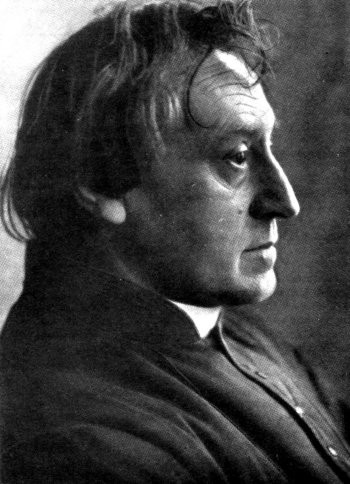 (55) Cyriel Verschaeve (1874-1949) est un prêtre catholique et un militant nationaliste. Poète, philosophe, essayiste et dramaturge, il est l’auteur de nombreux ouvrages (Judas ; Maria-Magdalena ; Jacob van Artevelde ; Passieverhaal ; De Kruisboom ; Het Uur van Vlaanderen ; Eeuwige gestalten ; etc). Chef du Conseil culturel flamand en 1940, il se réfugie en Autriche à la fin de la guerre et sera déchu de la nationalité belge.
(55) Cyriel Verschaeve (1874-1949) est un prêtre catholique et un militant nationaliste. Poète, philosophe, essayiste et dramaturge, il est l’auteur de nombreux ouvrages (Judas ; Maria-Magdalena ; Jacob van Artevelde ; Passieverhaal ; De Kruisboom ; Het Uur van Vlaanderen ; Eeuwige gestalten ; etc). Chef du Conseil culturel flamand en 1940, il se réfugie en Autriche à la fin de la guerre et sera déchu de la nationalité belge.
(56) Gerard Walschap (1898-1989) est l’auteur de pièces de théâtre, de nouvelles (Volk), de romans (Adelaide ; Houtekiet ; Een mens van goede wil ; Sybille ; Oproer in Kongo) et de contes pour enfants (De doot in het dorp ; De kaartridder van Herpeneert). Il sera anobli (titre de baron) en 1975.
(57) Wies Moens (1898-1982) est un historien de la littérature, un poète et un pamphlétaire. Il est l’auteur de divers recueils de poésie (Gedichten ; De tocht ; Golfslag ; De spitsboog ; etc) et de quelques récits en prose (De dooden leven ; Dertig dagen oorlog). Proche du mouvement solidariste (Verdinaso), il est condamné à mort par contumace, en 1945, et se réfugie aux Pays-Bas où il finira ses jours.
(58) Antoon Thiry (1888-1954) est l’auteur de nombreux romans (Pauwke’s vagevuur ; Onder Sinte Gommarus’ wake ; De vader ; Mijnheer van Geertrui zijn kerstnacht ; De hoorn schalt ; Gasten in ‘t huis ten have ; De zevenslager ; etc). Sympathisant du mouvement DeVlag, il sera condamné à trois ans de prison à la fin de la guerre.
(59) Voir Hedwig Speliers, « Le miracle de Weimar », in Textyles hors série N° 2 (1997), p. 167.
(60) Ancien aide-maçon, Pierre Hubermont (1903-1989) est un écrivain prolétarien qui fut membre du Parti Ouvrier Belge et prit part à la conférence des écrivains révolutionnaires (Kharkov, 1930). Il est l’auteur de plusieurs romans sociaux dont Treize hommes dans la mine, La Terre assassinée, Les Cordonniers, Marie des Pauvres, L’Arbre creux, et d’un témoignage sur les exhumations de Katyn (J’étais à Katyn, témoignage oculaire). Condamné à seize ans de détention pour collaboration, il sera remis en liberté en 1950.
(61) Ancien mineur de fond et militant trotskyste, Constant Malva (1903-1969) est un écrivain prolétarien. Il est l’auteur de divers contes et récits sociaux (Un propr’ à rien ; Borins ; Un ouvrier qui s’ennuie ; Mon homme de coupe ; Un mineur vous parle ; Le Jambot). Il sera condamné à une peine d’emprisonnement à la Libération.
(62) D’origine flamande mais d’expression française, Marie Gevers (1883-1975) est l’auteur de poèmes (Missembourg ; Les arbres et le vent), de romans (La Comtesse des digues ; Madame Orpha ou la sérénade de mai ; Guldentop ; La ligne de vie ; Paix sur les champs ; Château de l’Ouest ; etc), d’ouvrages sur la nature (L’herbier légendaire) et de contes et récits pour les enfants (Les oiseaux prisonniers ; Le Noël du petit Joseph) ; elle a également traduit et adapté en français de nombreux récits néerlandais. En 1938, elle fut la première femme élue à l’Académie Royale de langue et de littérature françaises de Belgique. Ses livres ont été traduits dans une dizaine de langues.
(63) Journaliste et ancien parlementaire rexiste, Pierre Daye (1892-1960) est l’auteur de très nombreux essais (La politique coloniale belge de Léopold II ; Le Maroc s’éveille ; La Belgique et la mer ; Beaux jours du Pacifique ; Stanley ; Guerre et Révolution ; L’Europe aux Européens ; Portrait de Léon Degrelle ; Trente-deux mois chez les députés ; et). Condamné à mort par contumace et déchu de la nationalité belge (1947), il vit après guerre en exil en Argentine où il finit ses jours.
(64) Guillaume Samsoen de Gérard est un traducteur d’origine liégeoise, membre du parti rexiste. Il est l’auteur d’essais (Missions secrètes en Ukraine ; Le comte de Tilly).
(65) Joseph Mignolet (1893-1973) est un écrivain patoisant. Il est l’auteur de recueils de poésie (Fleûrs di brouwîres ; Lès lâmes), de pièces de théâtre (Li vôye qui monte) et de romans (Vès l’ loumûre ; Li blanke dame ; etc).
(66) Sulev Jacques Kaja ou de son vrai nom Jacques Baruch (1919-2002) est un journaliste, spécialiste des peuples finno-ougriens. Diplômé d’esperanto et très attaché à la défense de l’Estonie (au point de prendre un pseudonyme estonien), il signe durant la guerre l’essai Un an de bolchevisme dans les pays Baltes, ce qui lui vaudra cinq mois de prison à la Libération. Après la guerre, il occupe divers emplois (horticulteur, ébéniste, antiquaire) et collabore à l’hebdomadaire Tintin ; il aurait peut-être inspiré à Hergé le personnage du pilote Szut qui apparaît dans Coke en stock… Il est également l’auteur de Légendes d’Estonie.
(67) Örnulf Tigerstedt (1900-1962) est un écrivain finnois de langue suédoise. Il est l’auteur de poésie (Vid gränsen ; Block och öde ; De heliga vägarna ; etc), d’essais (Skott i överkant ; Utan örnar) et de textes politiques (Statspolisen slår till ; Hemliga stämplingar).
(68) Tito Colliander (1904-1989) est un écrivain finnois de langue suédoise et de religion orthodoxe. Il est l’auteur de poèmes, de biographies, d’essais religieux, de pièces de théâtre et de romans (En vandrare ; Korståget ; Förbarma dig ; Taina ; Ljuset ; Grottan ; Vis om är kvar ; etc).
(69) R. Brasillach, A. Bonnard, M. Jouhandeau et R. Fernandez sont excusés…
(70) Liviu Rebreanu (1885-1944) est un journaliste, un romancier et un dramaturge. Il est l’auteur de nouvelles (Golanii ; Mărturisire ; Cântecul lebedei ; etc), de romans (Ion ; Gorila ; Jar ; etc) et de pièces de théâtre (Cadrilul ; Plicul ; Apostolii). Il a été directeur du Théâtre National et présidera (1940-44) l’Association des Écrivains Roumains.
(71) Henri Bruning (1900-1983) est un poète et un essayiste. Il est l’auteur des recueils Het verbond et Fuga, ainsi que de nombreux essais (Subjectieve normen ; Verworpen christendom ; Voorspel ; Vluchtige vertoogen ; Heilig verbond ; etc). Membre du mouvement solidariste (Verdinaso) puis du NSB, il sera condamné, à la fin de la guerre, à deux ans de détention et dix ans d’interdiction de publier.
(72) Svend Borberg (1888-1947) est l’auteur de poèmes (Verdensspejlet) et de pièces de théâtre (Ingen ; Cirkus juris ; Synder og Helgen). Il est le père de Claus von Bülow.
(73) Jozef Cíger-Hronský (1896-1960) est l’auteur de nouvelles (U nás ; Domov ; Proroctvo doktora Stankovského ; Na križných cestách ; etc), de comédies (Firma Moor ; Návrat) et de livres pour enfants (Janko Hrášok ; Sokoliar Tomáš ; Tri múdre kozliatka ; etc). À la fin de la guerre, il émigre en Italie puis en Argentine où il fonde l’Association des Écrivains Slovaques en Exil. Il présidera également le Conseil National Slovaque.
(74) Antonio Baldini (1889-1962) est l’auteur de récits (Nostro Purgatorio ; Amici allo spiedo), d’essais (Ludovico della tranquillità ; Fine Ottocento. Carducci, Pascoli, D’Annunzio e minori) et de carnets de voyage (La vecchia del Bar Bullier ; Italia del Bonincontro ; Melafumo ; Doppio Melafumo). Il est entré à l’Académie en 1939.
(75) Emilio Cecchi (1884-1966) est l’auteur de récits (Pesci rossi ; Messico ; Et in Arcadia ego ; Corse al trotto vecchie e nuove ; etc), d’ouvrages de critique d’art (Pittura italiana dell’Ottocento ; La scultura fiorentina del Quattrocento) et de critique littéraire (La poesia di Giovanni Pascoli ; Storia della letteratura inglese del secolo XIX ; I grandi romantici inglesi ; etc). Il a également été scénariste et producteur de cinéma. Il est entré à l’Académie en 1940.
(76) Giulio Cogni (1908-1983) est l’auteur d’essais sur la musique (Che cosa è la musica ; Le forze segrete della musica ; Wagner e Beethoven) et la philosophie (Saggio sull’Amore come nuovo principio d’immortalità ; Lo Spirito Assoluto ; Il razzismo ; I valori della stirpe italiana ; etc).
(77) Autodidacte, Enrico Falqui (1901-1974) est l’auteur de très nombreux ouvrages d’histoire de la littérature et d’anthologies (Scrittori nuovi ; Antologia della prosa scientifica italiana del Seicento ; La letteratura del ventennio nero ; Prosatori e narratori del Novecento italiano ; etc).
(78) Elio Vittorini (1908-1966) est l’auteur d’essais (La tragica vicenda di Carlo III ; Americana ; Diario in pubblico) et de romans (Piccola borghesia ; Nei morlacchi – Viaggio in Sardegna ; Conversazione in Sicilia ; Il garofano rosso ; Le donne di Messina ; etc). Rallié à la résistance antifasciste, il dirigera après guerre le quotidien communiste L’Unità.
(79) Giaime Pintor (1919-1943) est un journaliste et un traducteur qui a collaboré à l’anthologie Teatro tedesco. Recruté par les services secrets anglais et envoyé en mission à Rome, il saute sur une mine le 1er décembre 1943. La plupart de ses essais et traductions paraîtront après sa mort (Poesie di Rainer Maria Rilke ; Saggio su la Rivoluzione di Carlo Pisacane ; Vathek di William Beckford ; Il sangue d’Europa ; etc).
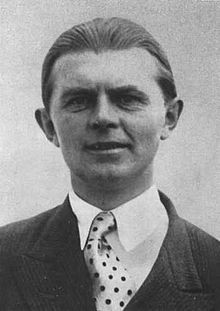 (80) Edwin Erich Dwinger (1898-1981) est l’auteur de nombreux essais et romans (Der grosse Grab ; Die Armee hinter Stacheldraht ; Die zwölf Räuber ; Die letzen Reiter ; Zwischen Weiss und Rot ; Ein Erbhof im Allgäu ; Der Tod in Polen ; Dichter unter den Waffen ; etc). Hostile à la politique anti-slave du IIIe Reich, il soutient le général Vlassov et finit par être assigné à résidence et placé sous la surveillance du Sicherheitsdienst.
(80) Edwin Erich Dwinger (1898-1981) est l’auteur de nombreux essais et romans (Der grosse Grab ; Die Armee hinter Stacheldraht ; Die zwölf Räuber ; Die letzen Reiter ; Zwischen Weiss und Rot ; Ein Erbhof im Allgäu ; Der Tod in Polen ; Dichter unter den Waffen ; etc). Hostile à la politique anti-slave du IIIe Reich, il soutient le général Vlassov et finit par être assigné à résidence et placé sous la surveillance du Sicherheitsdienst.
(81) Wilhelm Ehmer (1896-1976) est un journaliste, auteur de plusieurs récits à succès (Peter reist um die Welt ; Um den Gipfel der Welt ; Das Ringen um den Himalaya ; So werden wir gelebt ; etc). Son ouvrage consacré à l ‘alpiniste britannique Mallory et à la conquête de l’Everest avait été particulièrement salué par la critique.
(82) Wilhelm Schäfer (1868-1952) est un écrivain völkisch extrêmement prolixe. Il est l’auteur de dizaines de pièces de théâtre, nouvelles et romans (Der Hauptmann von Köpenick ; Die Zehn Gebote ; Rheinsagen ; Lebenstag eines Menschenfreundes ; Winckelmanns Ende ; Die rote Hanne ; Deutsche Reden ; etc).
(83) Georg von der Vring (1889-1968) est l’auteur de poèmes (Südergast ; Oktoberrose ; Der Schwan ; etc), de romans (Soldat Suhren ; Die Spanische Hochzeit ; Der Zeuge ; Argonnerwald ; Der Schritt über die Schwelle ; Frühwind ; etc) ainsi que de traductions de Verlaine, Maupassant ou Francis Jammes. G. von der Vring a enseigné le dessin et il est également peintre. Ancien combattant de la Première Guerre mondiale d’où il était revenu résolument pacifiste, il était plutôt mal vu du régime nazi.
(84) Hermann Burte (1879-1960) est l’auteur de poésie (Alemannische Gedichte ; Ursula ; Das Heit im Geiste ; etc), d’une tragédie (Katte) et de romans (Wiltfeber, der ewige Deutsche). H. Burte était également un peintre et un spécialiste du dialecte alémanique.
(85) Irja Salla ou de son vrai nom Taju Birgitta Tiara Sallinen (1912-1966) est l’auteur de romans (Kaksi tietä ; Liisa-Beatan tarina ; Unissakävijä).
(86) À l’automne 1941, il y eut aussi un voyage en Allemagne de musiciens français et un autre de peintres et sculpteurs. Parmi les musiciens invités aux « fêtes Mozart » figuraient les compositeurs Florent Schmitt, Max d’Ollone, Alfred Bachelet, Marcel Delannoy, Marcel Labey, Gustave Samazeuilh, Arthur Honneger, mais aussi Jacques Rouché, Robert Bernard et Lucien Rebatet. Chez les peintres et sculpteurs figuraient Paul Belmondo, Charles Despiau, Henri Bouchard, Louis Lejeune, André Derain, Roland Oudot, Raymond Legueult, André Dunoyer de Segonzac, Maurice de Vlaminck, Kees van Dongen, Othon Friesz et Paul Landowski…
(87) Célèbre réplique tirée de la pièce Schlageter de Hanns Johst (v. note 21) et souvent associée aux dirigeants nazis.
(88) Juriste de formation, Hans-Friedrich Blunck (1888-1961) est l’auteur d’essais (Die nordische Welt) et de romans (Totentanz ; Berend Fock ; Die Weibsmühle ; Werdendes Volk ; Die Jägerin ; etc). Il s’intéresse particulièrement à l’histoire des peuples nordiques, au parler bas allemand, au panthéon germanique et aux sagas scandinaves. Il fut le premier président de la Chambre des Écrivains et n’était pas membre du NSDAP.
(89) Karl Heinrich Waggerl (1897-1973) est un écrivain autrichien. Il est l’auteur de nouvelles et récits (Das Wiesenbuch ; Feierabend ; etc) ainsi que de romans (Brot ; Schweres Blut ; Mütter ; etc). Il a également constitué une importante collection de photographies.
(90) Eugen Roth (1895-1976) est l’auteur de poésie et de romans (Ein Mensch ; Die Frau in der Weltgeschichte ; Der Wunderdoktor ; Der Fischkasten ; Der letzte Mensch ; etc). Ses ouvrages sont parmi les plus lus du monde germanique.
(91) cité par F. Bergeron, in Guide des citations de l’homme de droite, Paris, Editions du Trident, 1989, p. 60.
(92) Derrière le pangermanisme officiel des milieux dirigeants du IIIe Reich existaient de réelles tendances européennes dont témoigne par exemple le manifeste pour une « communauté européenne » que signe Ribbentrop, le 21 mars 1943. On sait que des dignitaires comme Walther Funk et Arthur Seyss-Inquart étaient favorables à un projet européen, de même que certains hauts fonctionnaires (Hans Frohwein, Cécil von Renthe-Fink, Walter Hallstein, Heinrich Hunke, Alexander Dolezalek).
Bibliographie
-
L. Richard, Le nazisme et la culture, Paris, Maspero, 1978.
-
B. Delcord, « À propos de quelques “chapelles“ politico-littéraires en Belgique (1919-1940) », in Cahiers d’Histoire de la IIe Guerre mondiale, Bruxelles, Centre de Recherches et d’Études historiques de la IIe Guerre mondiale, N° 10, octobre 1986.
-
F. R. Hausmann, « Dichte, Dichter, tage nicht ! ». Die Europäische Schriftsteller-Vereinigung in Weimar 1941-1948, Francfort, Vittorio Klostermann, 2004.
-
F. R. Hausmann, « Kollaborierende Intellektuelle in Weimar – Die ‘Europäische Schriftsteller-Vereinigung’ alq ‘Anti-P.E.N.-Club’ », in Europa in Weimar. Visionen eines Kontinents, Göttingen, Wallstein, 2008.
-
F. Dufay, Le voyage d’automne, Paris, Perrin, 2008.
-
H. Speliers, « Het wonder van Weimar. Een collaboratie verhaal », in Gierik & Nieuw Vlaams Tijdschrift, N° 80 (2003).
-
O. Lubrich, « Comparative Literature – in, from and beyond Germany », in Comparative Critical Studies 3.1-2 (2006).
-
M. Serri, Il breve viaggio, Venise, Marsilio, 2002.
-
J. Hillesheim, E. Michael, Lexikon nationalsozialistischer Dichter, Würzburg, Königshausen & Neumann, 1993.
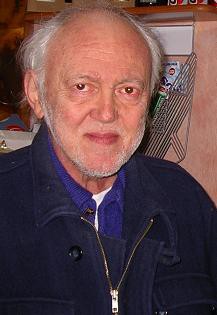 El pasado día 23 de noviembre murió en la ciudad de Turín el filósofo italiano Costanzo Preve (nacido en Valenza en 1943). Filósofo marxista y profesor de historia y de filosofía de 1967 a 2002. Miembro del PCI de 1973 a 1975. En 1978 participó en la creación del Centro Studi di Materialismo Storico (CSMS).
El pasado día 23 de noviembre murió en la ciudad de Turín el filósofo italiano Costanzo Preve (nacido en Valenza en 1943). Filósofo marxista y profesor de historia y de filosofía de 1967 a 2002. Miembro del PCI de 1973 a 1975. En 1978 participó en la creación del Centro Studi di Materialismo Storico (CSMS).


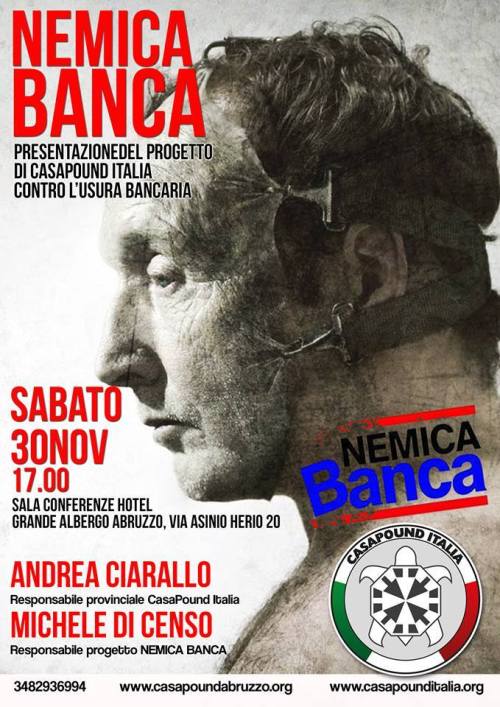

 del.icio.us
del.icio.us
 Digg
Digg
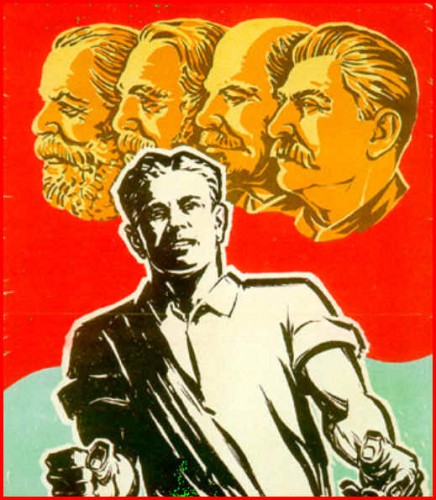
 (g) El la Crítica al programa de Gotha de 1875, Marx distingue dos fases en el paso al comunismo, la primera fase (de cada uno según sus capacidades, a cada uno según su trabajo) y la segunda fase (de cada uno según sus capacidades, a cada uno según sus necesidades). Es una distinción generalmente muy conocida hasta por los principiantes de los estudios de marxismo.
(g) El la Crítica al programa de Gotha de 1875, Marx distingue dos fases en el paso al comunismo, la primera fase (de cada uno según sus capacidades, a cada uno según su trabajo) y la segunda fase (de cada uno según sus capacidades, a cada uno según sus necesidades). Es una distinción generalmente muy conocida hasta por los principiantes de los estudios de marxismo.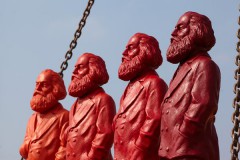 Veamos cómo el maestro de GLG, Louis Althuser, se representaba el comunismo en una conferencia en Terni (véase Repubblica et Manifesto, 5/4/1980) poco antes de su conocida catástrofe. Delante de una platea de monos pasmados “de izquierda”, el maestro franco-taoísta sostiene por este orden las tesis siguientes (por desgracia me limito a las solas tesis relatadas por los mediocres periodistas allí presentes).
Veamos cómo el maestro de GLG, Louis Althuser, se representaba el comunismo en una conferencia en Terni (véase Repubblica et Manifesto, 5/4/1980) poco antes de su conocida catástrofe. Delante de una platea de monos pasmados “de izquierda”, el maestro franco-taoísta sostiene por este orden las tesis siguientes (por desgracia me limito a las solas tesis relatadas por los mediocres periodistas allí presentes).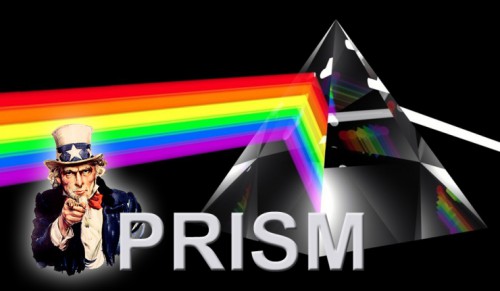
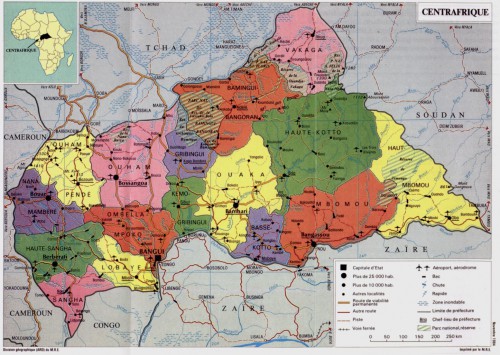
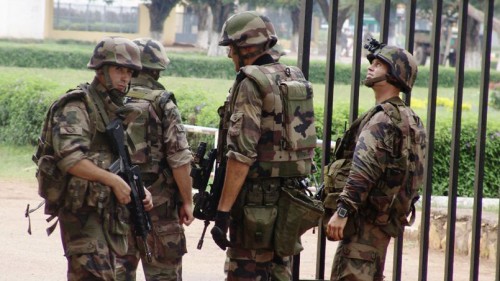
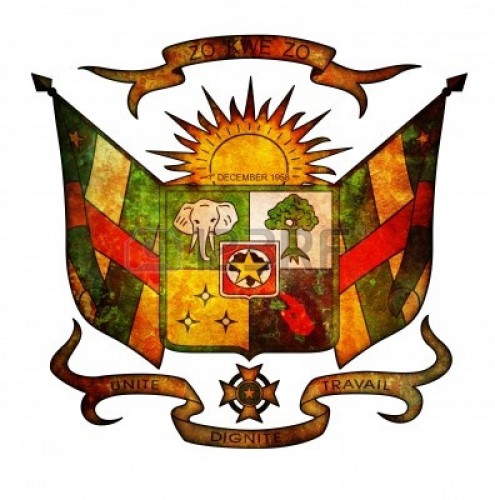
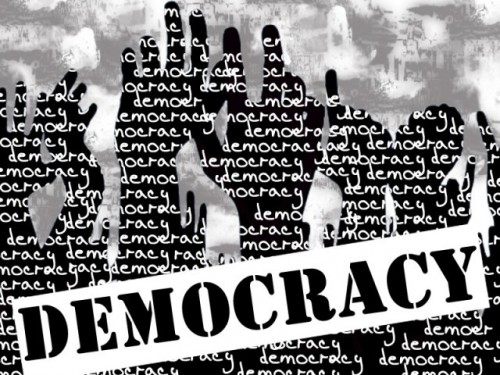

 Un articolo uscito non troppo tempo fa sul Corriere della Sera, a firma di Dario Fertilio (1), ripercorreva le più sensazionali, e in molti casi inspiegabili, bocciature per il Premio Nobel per la
Un articolo uscito non troppo tempo fa sul Corriere della Sera, a firma di Dario Fertilio (1), ripercorreva le più sensazionali, e in molti casi inspiegabili, bocciature per il Premio Nobel per la 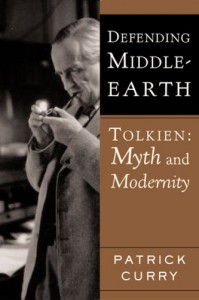

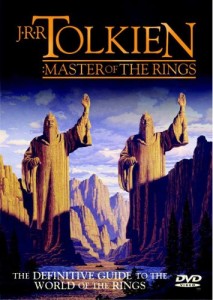
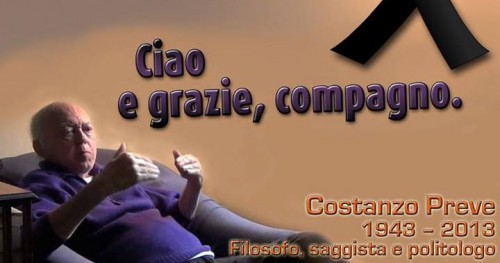


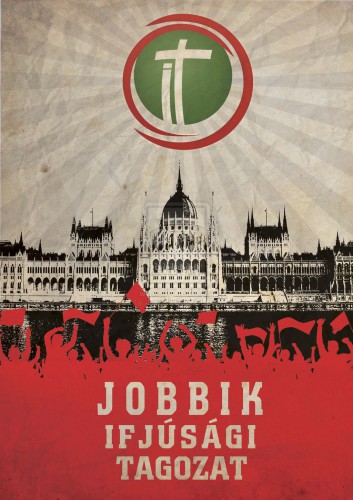
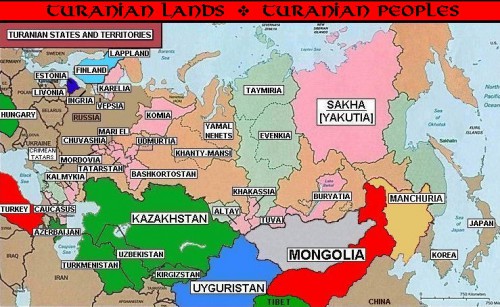
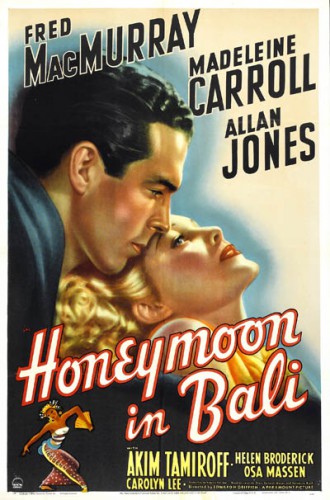

 The beta rival for Carroll’s affection is Eric Sinclair, played by Welsh American singer-actor Allan Jones, a professional opera singer who has known Carroll for many years. His attitudes toward marriage are much different from MacMurray’s. He believes a woman can have marriage and a career both, as Carroll tells MacMurray while the three are returning to her apartment in Eric’s chauffeur-driven car. “He even believes,” she adds, “that if a [married] woman wanted to have her own apartment, and he [the husband] his own apartment . . .” her voice trailing off lamely because the words sound so foolish when spoken aloud. Eric thinks MacMurray’s view of marriage “sounds a bit barbaric.” (At another point in the film, though, he wonders, “What’s this guy got? What’s his technique?”) When MacMurray escorts Carroll to her door, she scolds him, saying, “That was rude of you, trying to hold my hand in another man’s car.”
The beta rival for Carroll’s affection is Eric Sinclair, played by Welsh American singer-actor Allan Jones, a professional opera singer who has known Carroll for many years. His attitudes toward marriage are much different from MacMurray’s. He believes a woman can have marriage and a career both, as Carroll tells MacMurray while the three are returning to her apartment in Eric’s chauffeur-driven car. “He even believes,” she adds, “that if a [married] woman wanted to have her own apartment, and he [the husband] his own apartment . . .” her voice trailing off lamely because the words sound so foolish when spoken aloud. Eric thinks MacMurray’s view of marriage “sounds a bit barbaric.” (At another point in the film, though, he wonders, “What’s this guy got? What’s his technique?”) When MacMurray escorts Carroll to her door, she scolds him, saying, “That was rude of you, trying to hold my hand in another man’s car.”

 À l’issue de cette brève évocation de la Société Européenne des Écrivains, force est de constater que le IIIe Reich et l’Europe occupée n’étaient pas le désert culturel absolu que l’on nous a si souvent décrit. Dans cet enfer, il y avait des musiciens, des peintres et des sculpteurs qui s’exprimaient (86) et aussi des écrivains qui ne se sentaient pas si mal. Et quant au Dr Gœbbels, loin de brandir son Browning à l’énoncé du mot culture (87), il témoignait, au contraire, d’un réel intérêt pour les Lettres et les Arts, domaines où il faisait souvent montre (toutes proportions gardées, bien sûr) d’un « libéralisme » étonnant. La Société Européenne des Écrivains en est un peu l’illustration puisque le ministre de la Propagande en avait, en toute connaissance de cause, confié les leviers de commande à des hommes qui n’avaient rien de grands partisans du régime nazi. Hans Carossa et Carl Rothe n’étaient pas membres du NSDAP : le premier se réclamait presque ouvertement de l’ « émigration intérieure » et quant au second, il était même carrément en relation avec des conspirateurs antinazis. Parmi les membres allemands de l’association, nombreux étaient les auteurs qui, à l’instar de Hans Friedrich Blunck (88), Karl Heinrich Waggerl (89), Wilhelm Schäfer ou Eugen Roth (90), n’avaient pas la carte du parti, et si l’on trouvait, bien sûr, chez les adhérents étrangers, un fort contingent de sympathisants déclarés du national-socialisme, on y rencontrait aussi des conservateurs, des européistes et de simples anticommunistes. Lorsque, en mars 1942 et à l’occasion d’une réunion de l’ESV, Giovanni Papini fit un vibrant éloge du christianisme, on ne peut pas dire qu’il était vraiment en adéquation avec la doctrine nazie. Quelques auteurs provenaient d’horizons peu orthodoxes, comme l’académicien Emilio Cecchi qui avait signé, en 1925, le Manifeste des intellectuels antifascistes de Benedeto Croce, ou Viljo Kajava qui était un ancien marxiste. Certains, enfin, n’avaient pas véritablement choisi leur camp : ils étaient peut-être là par opportunisme ou par simple curiosité. Ainsi, les Croates Dobriša Cesarić, Slavko Kolar et Ivan Goran Kovačić ne tarderont-ils pas à se rallier à Tito, et les Italiens Vittorini et Pintor à rejoindre eux aussi les partisans communistes ou les forces alliées…
À l’issue de cette brève évocation de la Société Européenne des Écrivains, force est de constater que le IIIe Reich et l’Europe occupée n’étaient pas le désert culturel absolu que l’on nous a si souvent décrit. Dans cet enfer, il y avait des musiciens, des peintres et des sculpteurs qui s’exprimaient (86) et aussi des écrivains qui ne se sentaient pas si mal. Et quant au Dr Gœbbels, loin de brandir son Browning à l’énoncé du mot culture (87), il témoignait, au contraire, d’un réel intérêt pour les Lettres et les Arts, domaines où il faisait souvent montre (toutes proportions gardées, bien sûr) d’un « libéralisme » étonnant. La Société Européenne des Écrivains en est un peu l’illustration puisque le ministre de la Propagande en avait, en toute connaissance de cause, confié les leviers de commande à des hommes qui n’avaient rien de grands partisans du régime nazi. Hans Carossa et Carl Rothe n’étaient pas membres du NSDAP : le premier se réclamait presque ouvertement de l’ « émigration intérieure » et quant au second, il était même carrément en relation avec des conspirateurs antinazis. Parmi les membres allemands de l’association, nombreux étaient les auteurs qui, à l’instar de Hans Friedrich Blunck (88), Karl Heinrich Waggerl (89), Wilhelm Schäfer ou Eugen Roth (90), n’avaient pas la carte du parti, et si l’on trouvait, bien sûr, chez les adhérents étrangers, un fort contingent de sympathisants déclarés du national-socialisme, on y rencontrait aussi des conservateurs, des européistes et de simples anticommunistes. Lorsque, en mars 1942 et à l’occasion d’une réunion de l’ESV, Giovanni Papini fit un vibrant éloge du christianisme, on ne peut pas dire qu’il était vraiment en adéquation avec la doctrine nazie. Quelques auteurs provenaient d’horizons peu orthodoxes, comme l’académicien Emilio Cecchi qui avait signé, en 1925, le Manifeste des intellectuels antifascistes de Benedeto Croce, ou Viljo Kajava qui était un ancien marxiste. Certains, enfin, n’avaient pas véritablement choisi leur camp : ils étaient peut-être là par opportunisme ou par simple curiosité. Ainsi, les Croates Dobriša Cesarić, Slavko Kolar et Ivan Goran Kovačić ne tarderont-ils pas à se rallier à Tito, et les Italiens Vittorini et Pintor à rejoindre eux aussi les partisans communistes ou les forces alliées…  « Nul n’aura de l’esprit, hors nous et nos amis », écrivait déjà Molière auquel Jean-Paul Sartre fait écho à sa manière en affirmant que « par définition, un fasciste ne peut pas avoir de talent » (91). N’en déplaise à « l’agité du bocal » (comme le surnommait Céline), la Société Européenne des Écrivains comptait tout de même dans ses rangs des personnalités comme Knut Hamsun, Sven Hedin, Karl Heinrich Waggerl ou John Knittel qui étaient des auteurs de notoriété internationale et au talent unanimement reconnu. Elle réunissait aussi des gens comme Eugen Roth, Marcel Jouhandeau (photo), Mile Budak, Stijn Streuvels, V. A. Koskenniemi ou József Nyírö qui figuraient à l’époque et dans leurs pays respectifs parmi les auteurs les plus lus. Certes, à côté de ces « célébrités », l’ESV accueillait quelques écrivains moins connus mais ce déficit de notoriété ne tenait pas tant à leur manque de talent qu’au fait que l’ancien système les avait délibérément ignorés ou marginalisés pour des raisons idéologiques…
« Nul n’aura de l’esprit, hors nous et nos amis », écrivait déjà Molière auquel Jean-Paul Sartre fait écho à sa manière en affirmant que « par définition, un fasciste ne peut pas avoir de talent » (91). N’en déplaise à « l’agité du bocal » (comme le surnommait Céline), la Société Européenne des Écrivains comptait tout de même dans ses rangs des personnalités comme Knut Hamsun, Sven Hedin, Karl Heinrich Waggerl ou John Knittel qui étaient des auteurs de notoriété internationale et au talent unanimement reconnu. Elle réunissait aussi des gens comme Eugen Roth, Marcel Jouhandeau (photo), Mile Budak, Stijn Streuvels, V. A. Koskenniemi ou József Nyírö qui figuraient à l’époque et dans leurs pays respectifs parmi les auteurs les plus lus. Certes, à côté de ces « célébrités », l’ESV accueillait quelques écrivains moins connus mais ce déficit de notoriété ne tenait pas tant à leur manque de talent qu’au fait que l’ancien système les avait délibérément ignorés ou marginalisés pour des raisons idéologiques… (45) Sven Hedin (1865-1952) est un célèbre géographe et explorateur. Il est l’auteur de récits de voyage (Le Tibet dévoilé ; Bagdad – Babylon – Ninive ; Persien und Mesopotamien ; Von Peking nach Moskau ; Rätsel der Gobi ; Der wandernde See ; etc), d’ouvrages autobiographiques (Mein Leben als Entdecker ; Eroberungszüge in Tibet ; Ohne Auftrag in Berlin) et d’ouvrages politiques (Ein Volk in Waffen ; Deutschland und der Weltfriede ; Amerika im Kampf der Kontinente). Sympathisant du IIIe Reich (bien qu’il eût des ascendants juifs), il interviendra à plusieurs reprises en faveur de prisonniers juifs et norvégiens et sauvera la vie de plusieurs d’entre eux. En 1946, il obtiendra également la grâce du général allemand Nikolaus von Falkenhorst qui avait été condamné à mort par un tribunal britannique.
(45) Sven Hedin (1865-1952) est un célèbre géographe et explorateur. Il est l’auteur de récits de voyage (Le Tibet dévoilé ; Bagdad – Babylon – Ninive ; Persien und Mesopotamien ; Von Peking nach Moskau ; Rätsel der Gobi ; Der wandernde See ; etc), d’ouvrages autobiographiques (Mein Leben als Entdecker ; Eroberungszüge in Tibet ; Ohne Auftrag in Berlin) et d’ouvrages politiques (Ein Volk in Waffen ; Deutschland und der Weltfriede ; Amerika im Kampf der Kontinente). Sympathisant du IIIe Reich (bien qu’il eût des ascendants juifs), il interviendra à plusieurs reprises en faveur de prisonniers juifs et norvégiens et sauvera la vie de plusieurs d’entre eux. En 1946, il obtiendra également la grâce du général allemand Nikolaus von Falkenhorst qui avait été condamné à mort par un tribunal britannique. (55) Cyriel Verschaeve (1874-1949) est un prêtre catholique et un militant nationaliste. Poète, philosophe, essayiste et dramaturge, il est l’auteur de nombreux ouvrages (Judas ; Maria-Magdalena ; Jacob van Artevelde ; Passieverhaal ; De Kruisboom ; Het Uur van Vlaanderen ; Eeuwige gestalten ; etc). Chef du Conseil culturel flamand en 1940, il se réfugie en Autriche à la fin de la guerre et sera déchu de la nationalité belge.
(55) Cyriel Verschaeve (1874-1949) est un prêtre catholique et un militant nationaliste. Poète, philosophe, essayiste et dramaturge, il est l’auteur de nombreux ouvrages (Judas ; Maria-Magdalena ; Jacob van Artevelde ; Passieverhaal ; De Kruisboom ; Het Uur van Vlaanderen ; Eeuwige gestalten ; etc). Chef du Conseil culturel flamand en 1940, il se réfugie en Autriche à la fin de la guerre et sera déchu de la nationalité belge. (80) Edwin Erich Dwinger (1898-1981) est l’auteur de nombreux essais et romans (Der grosse Grab ; Die Armee hinter Stacheldraht ; Die zwölf Räuber ; Die letzen Reiter ; Zwischen Weiss und Rot ; Ein Erbhof im Allgäu ; Der Tod in Polen ; Dichter unter den Waffen ; etc). Hostile à la politique anti-slave du IIIe Reich, il soutient le général Vlassov et finit par être assigné à résidence et placé sous la surveillance du Sicherheitsdienst.
(80) Edwin Erich Dwinger (1898-1981) est l’auteur de nombreux essais et romans (Der grosse Grab ; Die Armee hinter Stacheldraht ; Die zwölf Räuber ; Die letzen Reiter ; Zwischen Weiss und Rot ; Ein Erbhof im Allgäu ; Der Tod in Polen ; Dichter unter den Waffen ; etc). Hostile à la politique anti-slave du IIIe Reich, il soutient le général Vlassov et finit par être assigné à résidence et placé sous la surveillance du Sicherheitsdienst. 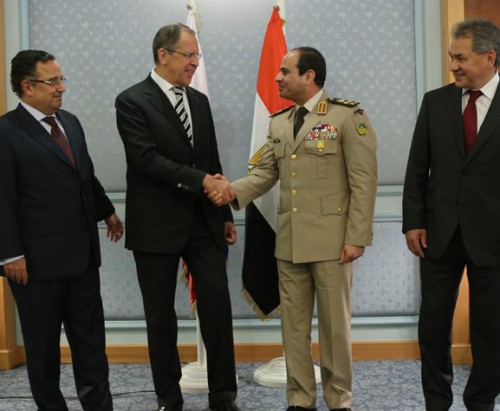
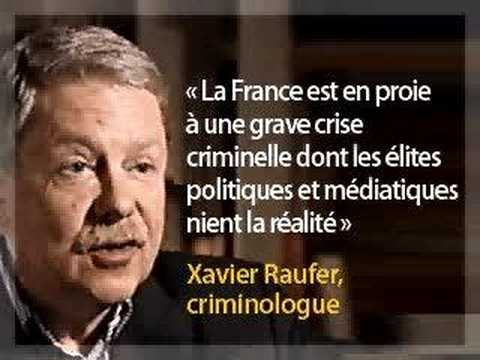 Le maquillage de la réalité est une des grandes spécialités de l’idéologie dominante bien-pensante avec le déni de cette même réalité. Exactement comme dans les régimes totalitaires communistes. L’instrument privilégié de la propagande peut d’abord être l’écrit, la presse ou le livre, par l’oligarchie journalistique et intellectuelle bien pensante. Sur le thème du célèbre « l’immigration, une chance pour la France » (1) ou la dogmatisation d’autres contre-vérités comme par exemple « les Français sont racistes » ou « il n’existe pas de racisme anti Blanc » (le racisme serait à sens unique) ou encore tous les propos sur les ”fantasmes” d’insécurité, ou sur le déni du lien évident entre criminalité et immigration, pourtant clairement attesté par la géographie des crimes et délits.
Le maquillage de la réalité est une des grandes spécialités de l’idéologie dominante bien-pensante avec le déni de cette même réalité. Exactement comme dans les régimes totalitaires communistes. L’instrument privilégié de la propagande peut d’abord être l’écrit, la presse ou le livre, par l’oligarchie journalistique et intellectuelle bien pensante. Sur le thème du célèbre « l’immigration, une chance pour la France » (1) ou la dogmatisation d’autres contre-vérités comme par exemple « les Français sont racistes » ou « il n’existe pas de racisme anti Blanc » (le racisme serait à sens unique) ou encore tous les propos sur les ”fantasmes” d’insécurité, ou sur le déni du lien évident entre criminalité et immigration, pourtant clairement attesté par la géographie des crimes et délits.  Cela fait d’ailleurs longtemps que le cinéma et les téléfilms (surtout policiers) procèdent à des inversions de la réalité : les voyous et les gentils ne sont pas les mêmes que dans la vraie vie….Du temps de l’Union soviétique, de la même manière, films et téléfilms inversaient la réalité pour obéir à l’idéologie officielle : l’Ouest y était par exemple présenté comme un enfer en proie à la répression et à la pauvreté. Mais les ficelles de ce genre de désinformation ( ” faire passer les vessies pour des lanternes ”) qui prend le peuple pour une masse d’imbéciles se révèlent, à terme, inutiles.
Cela fait d’ailleurs longtemps que le cinéma et les téléfilms (surtout policiers) procèdent à des inversions de la réalité : les voyous et les gentils ne sont pas les mêmes que dans la vraie vie….Du temps de l’Union soviétique, de la même manière, films et téléfilms inversaient la réalité pour obéir à l’idéologie officielle : l’Ouest y était par exemple présenté comme un enfer en proie à la répression et à la pauvreté. Mais les ficelles de ce genre de désinformation ( ” faire passer les vessies pour des lanternes ”) qui prend le peuple pour une masse d’imbéciles se révèlent, à terme, inutiles.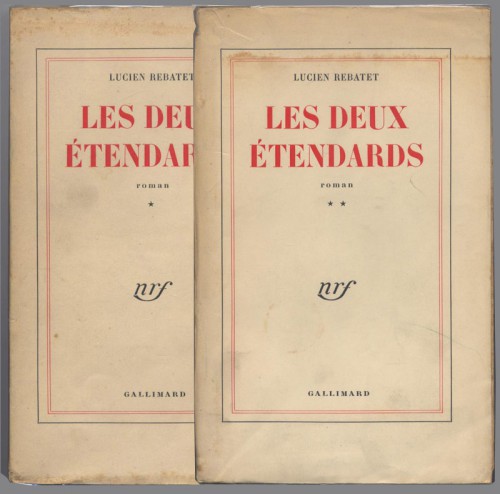
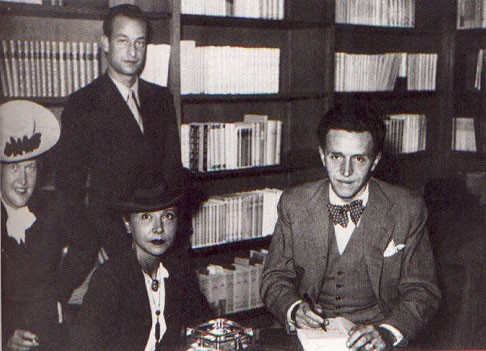



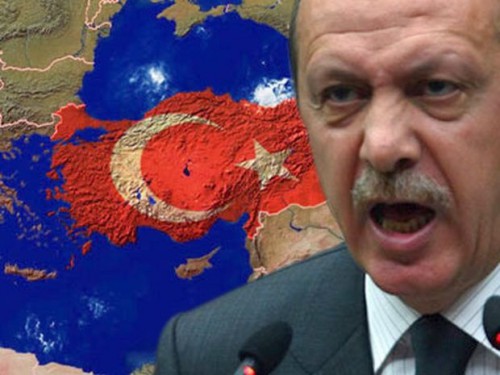
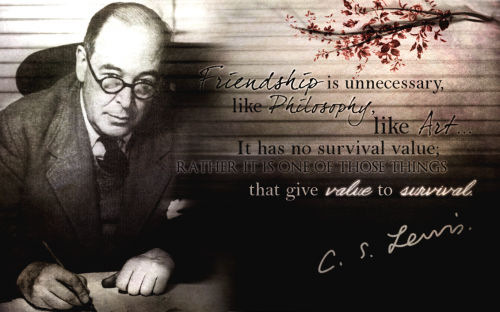
 Paolo Gulisano ha scritto che il simbolismo di Lewis non è sentimentale ma “sacramentale”: “Le sue immagini funzionano spesso come simboli, che hanno la capacità di mostrare la verità e di farle raggiungere la coscienza del lettore e destare la sua meraviglia”. Non meno importante dell’altrove immaginato con Narnia è il viaggio dello scienziato Ransom nella trilogia fanta-teologica che comprende i romanzi Lontano dal pianeta silenzioso, Perelandra e Quell’orribile forza: “Durante il suo involontario viaggio interplanetario Ransom – scrive ancora Anna Maria Giorgi – sa comunque aprire gli occhi a scoprire una bellezza non solo fisica in quella che è la grande danza dell’universo, comprendendo che ‘spazio’ è una parola fredda e inadeguata per definire ‘il sommo oceano di splendore nel quale navigava’ “. Nel personaggio di Ransom, tra l’altro, rivivono alcune caratteristiche dell’amico Tolkien. Lewis non fu solo narratore di fiabe e inventore di miti ma anche un convinto propagandista. Il suo obiettivo polemico, sempre “aggredito” con senso dello humour e leggerezza, senza mai contaminarsi con il fanatismo, era la mentalità scientista e relativista, finché non scelse convintamente di far prevalere in lui l’uomo immaginativo, l’unico in grado di far nascere Narnia: “In me l’uomo immaginativo è più vecchio e opera con più continuità, e in questo senso è più basilare sia rispetto allo scrittore religioso, sia al critico…”.
Paolo Gulisano ha scritto che il simbolismo di Lewis non è sentimentale ma “sacramentale”: “Le sue immagini funzionano spesso come simboli, che hanno la capacità di mostrare la verità e di farle raggiungere la coscienza del lettore e destare la sua meraviglia”. Non meno importante dell’altrove immaginato con Narnia è il viaggio dello scienziato Ransom nella trilogia fanta-teologica che comprende i romanzi Lontano dal pianeta silenzioso, Perelandra e Quell’orribile forza: “Durante il suo involontario viaggio interplanetario Ransom – scrive ancora Anna Maria Giorgi – sa comunque aprire gli occhi a scoprire una bellezza non solo fisica in quella che è la grande danza dell’universo, comprendendo che ‘spazio’ è una parola fredda e inadeguata per definire ‘il sommo oceano di splendore nel quale navigava’ “. Nel personaggio di Ransom, tra l’altro, rivivono alcune caratteristiche dell’amico Tolkien. Lewis non fu solo narratore di fiabe e inventore di miti ma anche un convinto propagandista. Il suo obiettivo polemico, sempre “aggredito” con senso dello humour e leggerezza, senza mai contaminarsi con il fanatismo, era la mentalità scientista e relativista, finché non scelse convintamente di far prevalere in lui l’uomo immaginativo, l’unico in grado di far nascere Narnia: “In me l’uomo immaginativo è più vecchio e opera con più continuità, e in questo senso è più basilare sia rispetto allo scrittore religioso, sia al critico…”.
